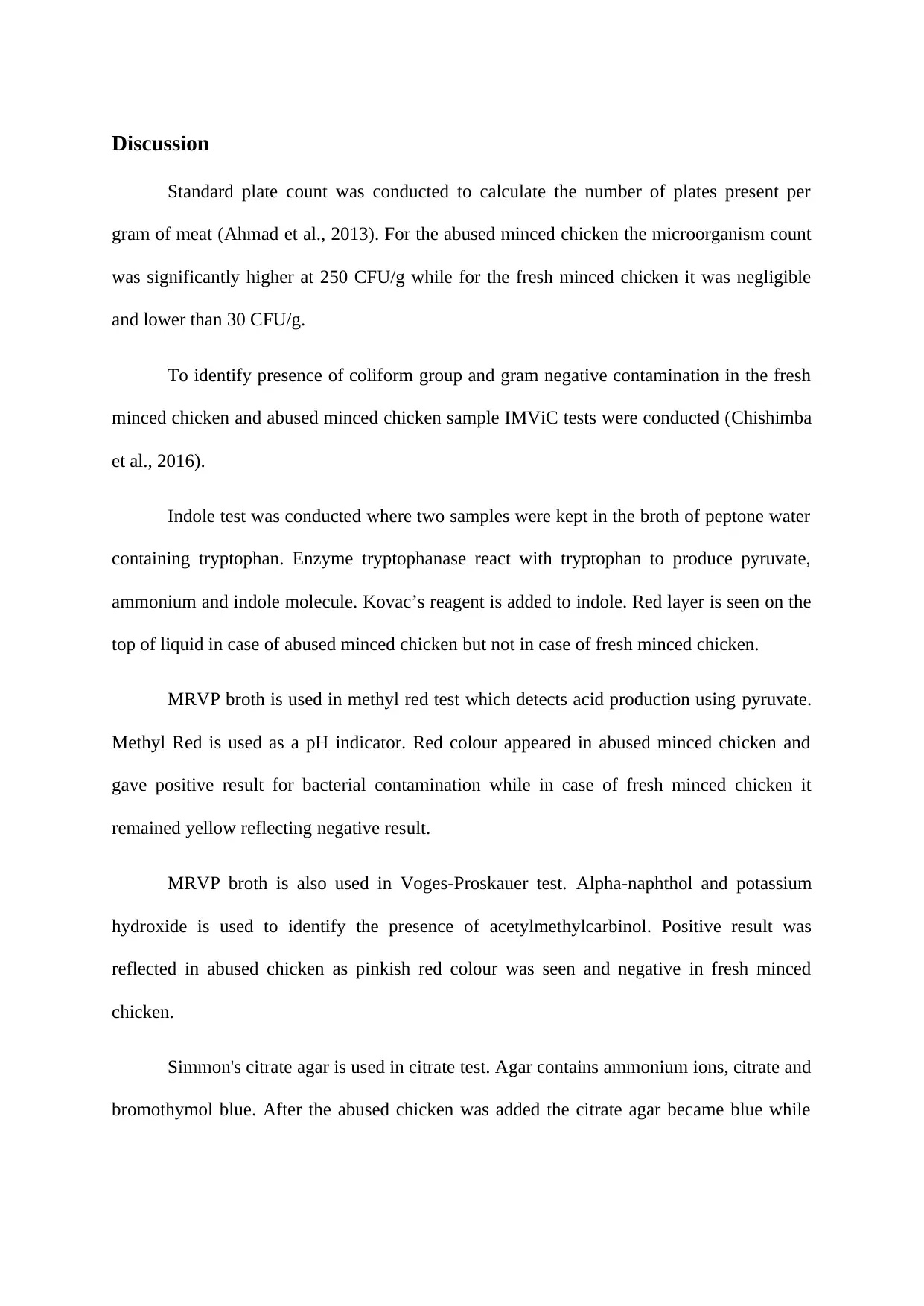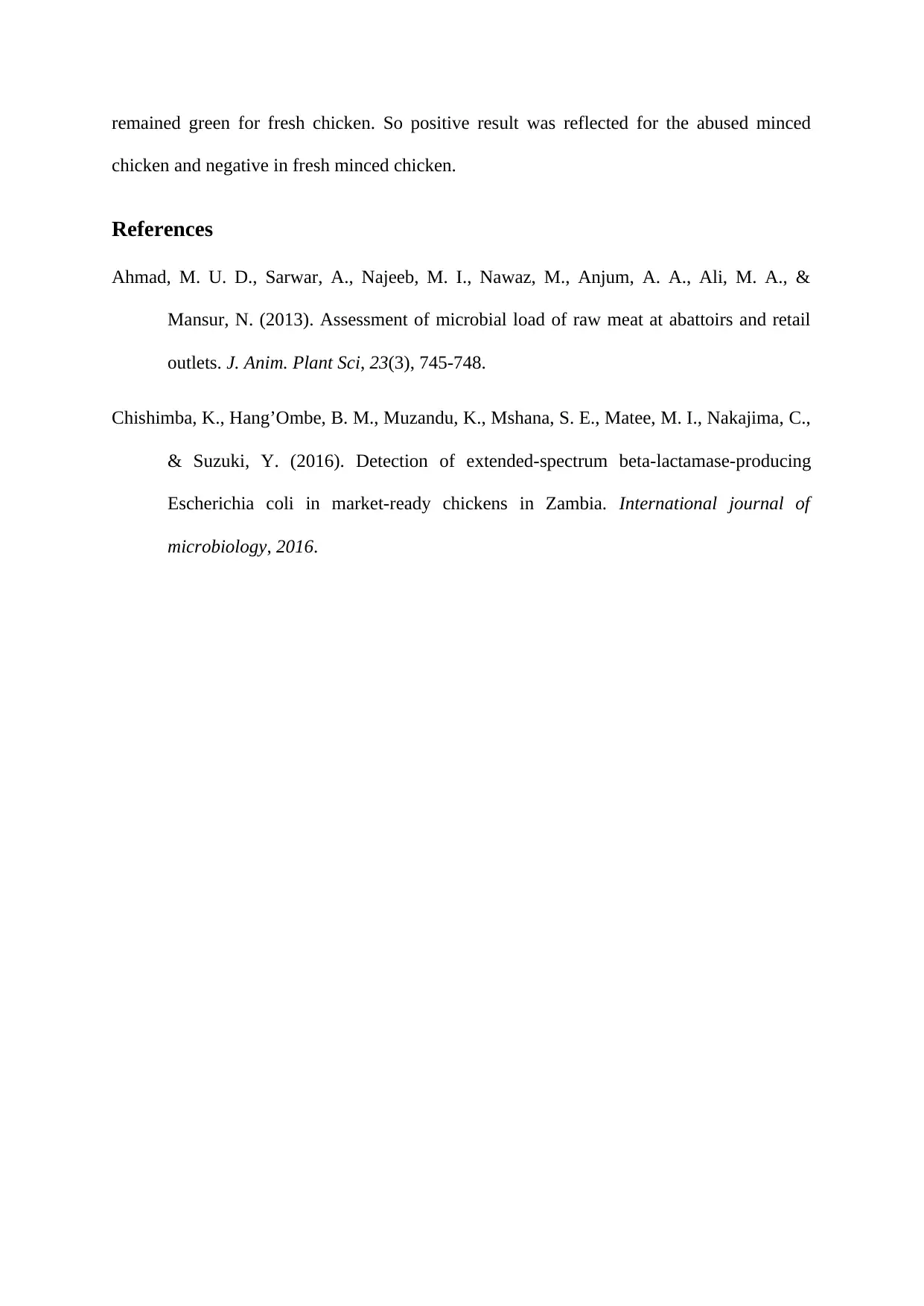Comparative Microbial Analysis: Standard Plate Count & IMViC Tests
VerifiedAdded on 2023/04/25
|2
|422
|117
Practical Assignment
AI Summary
This practical assignment involves a microbial analysis of both fresh and abused minced chicken. The standard plate count method was used to quantify the total number of microorganisms present, revealing a significantly higher count (250 CFU/g) in the abused sample compared to the fresh sample (below 30 CFU/g). IMViC tests were conducted to identify coliform group bacteria and gram-negative contamination. The Indole test, Methyl Red test, Voges-Proskauer test, and Citrate test each yielded positive results for the abused minced chicken, indicating bacterial contamination, while the fresh minced chicken showed negative results across all tests. These findings underscore the importance of proper handling and storage to prevent microbial growth in minced chicken. Desklib provides access to similar solved assignments and study tools for students.
1 out of 2




![[object Object]](/_next/static/media/star-bottom.7253800d.svg)